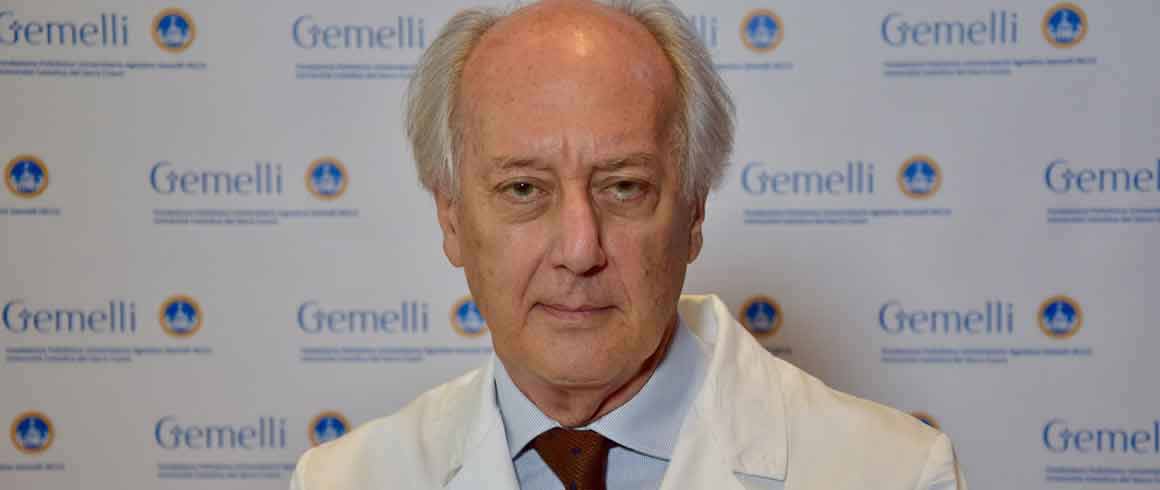What is a heart attack? It is often described through its symptoms, consequences or risk factors. But knowledge of the mechanisms that bring that sudden chest pain is still under study. There is a great deal of knowledge accumulated on the subject, but there are still many aspects that need to be explored in depth, in the hope that this will lead to new therapies or new prevention strategies. In today's issue of the New England Journal of Medicine, Professor Filippo Crea, director of the Department of Cardiovascular and Respiratory Sciences of Università Cattolica, campus of Rome, and of the Complex Operative Unit of Cardiology of the Fondazione Policlinico Universitario Agostino Gemelli IRCCS (in the photo above), and Dr. Rocco Vergallo, a cardiology contractor, explain why many patients have not suffered a heart attack even though they are "hosting" serious atherosclerotic plaques.
Ascolta "The backstage of the heart attack" su Spreaker.
Atherosclerosis does not come from one day to the next. The plaques that prevent blood from flowing in the arteries take years to form. But the heart attack occurs in an instant, often without warning. And what makes the difference between before and after is the sudden formation of a thrombus, a blood clot on the atherosclerotic plaque that ends up closing the artery completely. But this is only the epilogue of the story. Atherosclerotic plaques are not a simple thickening of the internal walls of the vessels, they are 'living' structures that go through phases of 'activation', during which they become unstable and therefore at risk of thrombosis, and phases of 'healing'. In the last thirty years, research has focused mainly on the mechanisms that make a plaque unstable, but these have not allowed us to identify biomarkers capable of anticipating the 'big one', i.e. heart attack or sudden death. The researchers' attention has therefore turned to the other side of the coin, namely the 'healing' processes of a plaque, and the review just published in the New England Journal of Medicine by cardiologists of our universities, takes stock of their role in the appearance of acute coronary syndromes and the possible therapeutic consequences that these discoveries could have.
«Coronaries, like all arteries - explains Professor Filippo Crea - are elastic tubes that carry blood to the organs. Atherosclerotic plaques are a sort of mountain, growing and protruding inside the arteries. If these 'mountains' grow in the coronary arteries (the vessels that bring oxygen and nourishment to the heart muscle) and exceed a certain height, they limit the increase in blood flow that the heart needs when making an effort».
This is the cause of strain angina. An annoying but not dangerous symptom.
But what happens when you have a heart attack? «What happens is that the mountain becomes a volcano, it emits ash and lapilli (clots) which suddenly obstruct the coronary artery in a short time. This 'volcano' is much more dangerous than the mountains because it can cause a heart attack or sudden death», says Professor Crea.
However, not all atherosclerotic plaques are destined to cause a heart attack, i.e. to become a 'volcano'. Understanding why some are prone to heart attacks while others are not is a crucial part of ongoing research. «Only a few plaques become volcanoes», reassures Professor Crea. «The control of risk factors and the therapies we do to patients with 'mountains' in their coronaries have precisely this aim: to prevent mountains from becoming volcanoes. Unfortunately, despite the extraordinary therapeutic progress made over the last few decades, heart attacks remain the number one killer in both men and women. So more needs to be done».
But the more research goes on, the more complicated things get. «We have discovered that 'eruptions' of atherosclerotic plaque mountains are very frequent, but fortunately many of them do not give symptoms because the body reacts by 'extinguishing' the volcano, i.e. healing the plaque and preventing the formation of thrombosis.
Some patients are excellent plaque healers, while others are not. This discovery confronts us with a new therapeutic objective: to turn bad plaque healers into good healers. But in order to achieve this result we need to gain a better understanding of the molecular mechanisms underlying plaque healing. This will allow us to improve the prognosis of people with atherosclerotic pathology because, in addition to reducing the risk of volcanoes forming, we will be able to 'switch them off' effectively, even in 'bad healers' patients, those in whom we will not be able to avoid the formation of 'volcanoes'».


